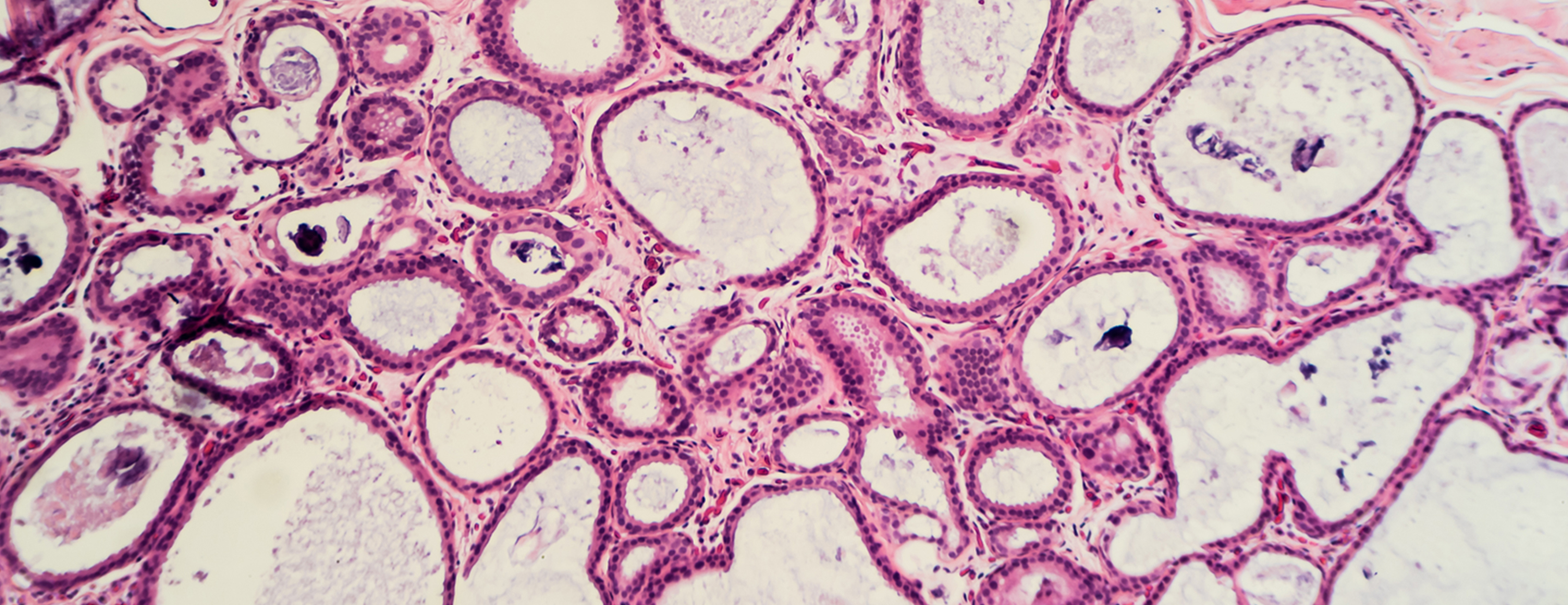If you have a cyst in your breast that's bothering you, your doctor may refer you for an ultrasound-guided cyst aspiration. This is a simple, brief procedure to drain fluid from the cyst. It's performed by a radiologist, using ultrasound images to guide a small needle into the cyst and remove the fluid. Generally, once the fluid is gone, so is the discomfort. If your doctor suspects an infection, the fluid may be sent to a lab to check for the presence of bacteria.

Ultrasound-Guided Breast Cyst Aspiration
Preparation
While this is a minimally invasive procedure, there's a risk of bleeding anytime skin is pierced. Therefore, if you take aspirin, we recommend you stop seven days before the procedure. If you take any other blood-thinning medications or have a bleeding problem, please let us know ahead of time.
On the day of the procedure, wear a comfortable bra and top that you can easily remove. Don't wear powder, deodorant, lotion or perfume under your arms or on your breasts.
Procedure
You'll be lying on your back or slightly turned to one side. The radiologist will put gel on your breast and move an ultrasound probe across it to locate the cyst. Once the cyst has been pinpointed, the radiologist cleans the breast and numbs the area by injecting a local anesthetic, which may sting briefly. Guided by ultrasound images, the radiologist then inserts a small needle directly into the cyst to drain the fluid.
If your primary care doctor suspects an infection, the fluid is sent to the lab to check for bacteria. Otherwise, the fluid is disposed of.
When the procedure is completed, sterile gauze is pressed against the area for several minutes to prevent bleeding, followed by placement of a small adhesive bandage. Your radiologist or nurse will explain what to expect after the procedure and how you should care for the area when you get home.
Although the aspiration itself takes only a few minutes, please figure on an hour for your visit, to allow for registration, changing and possible delays.
Risks and recovery
You may feel sore as the numbing medication wears off, and you may have mild bruising. Discomfort can usually be relieved with a recommended over-the-counter pain medication, such as Tylenol (acetaminophen). Most patients can resume their normal activities within a few hours.
There is a slight chance of infection at the insertion site. Please call the Breast Imaging Center or the Breast Care Center immediately if you experience any of the following symptoms:
- Swelling that worsens or doesn't go away
- Continued bleeding
- A fever above 101 degrees Fahrenheit (38.3 degrees Celsius)
- Pain that doesn't respond to Tylenol or other approved non-aspirin pain relievers
Keep in mind that these cysts may refill with fluid over time and need to be aspirated again.
UCSF Health medical specialists have reviewed this information. It is for educational purposes only and is not intended to replace the advice of your doctor or other health care provider. We encourage you to discuss any questions or concerns you may have with your provider.






